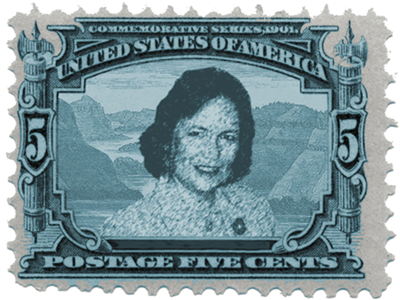Experience as Research: Shirley Sneve
This is part of the special section, Experience as Research.

I grew up in a small reservation community of 2,200 people. Arts were not anything special in my family growing up; they were just what everyone did. My dad is Norwegian; his parents homesteaded in South Dakota. In that community everyone was expected to know how to paint and draw and play music and sing. I grew up around people painting traditional Norwegian designs. It was the same with my mother’s family, who were Sioux. They all sang and danced and did beadwork and quilted. It was just who you were — it was no big deal. It really shaped who I am.
The first thing that really got me interested in playing music was hearing a string quartet in our local library when I was in fourth grade. It was the first time I had ever seen a live performance on a violin. I couldn’t believe the sounds. I was blown away. I joined chorus and band in school and ended up with a minor in music. Later I played with the Brookings Symphony. Adagio for Strings by Samuel Barber is a piece that influenced me a lot. One time the symphony hosted a German symphony, and I sat next to a German man. He didn’t speak English, but we were able to talk to each other through our clarinets. We could understand each other through our playing. This ability to communicate beyond words is one reason why music is so important to me.
The funny thing is that I’m lousy at visual arts and crafts. When I was in high school, because of the American Indian Movement, it suddenly became cool to be Indian again. We were all beading. My stuff was just dreadful. But that’s OK, I don’t have to be good — my brothers are amazing artists, my husband is an artist, and my daughter is a student at the Institute of American Indian Arts in Santa Fe.
Eventually I realized that being a professional bass clarinet player wasn’t realistic, and I moved on to my other love — storytelling. I started out working for the Dell Rapids Tribune and then got a job with South Dakota Public Broadcasting as a producer. I started down the lane of telling the stories of Native Americans. By the nature of what I do, I am an activist — though perhaps not as vocal as some others. I appreciate and am supportive of people like Madonna Thunder Hawk, who gets arrested for her beliefs, or LaDonna Harris, who influenced people in D.C.
I have had so many mentors and influences. Sara Lutman introduced me to philanthropy when she was at the Bush Foundation and helped me understand that world. I respect David Fraher at Arts Midwest for the big changes he has made in rural areas. Tim Giago, founder of the Lakota Times, really influenced me in journalism. He taught me about the inner workings of tribal governments and reservations, as well as the historical trauma Native Americans have faced. My all-time mentor was my journalism professor at South Dakota State, D. J. Cline. She introduced me to the world of female journalists.
I was one of the founders with Rae Burnett of the Northern Plains Tribal Arts Show and Market. That art was very inspiring — from printmakers and abstract painters to tanners who tanned their own hides and found porcupine quills. Sam English is one of those painters I’ve stayed in touch with. The way he translates old myths into modern representations is fascinating.
I joined the board of The Association of American Cultures (TAAC) because I realized that, although I know about mainstream art and Native American art, I am not exposed to the art of other ethnic cultures. It is critical for us as Americans to understand all the different things that it means to be an American, and all the different ways there are to be an American, in order to understand our cultural history. It helps us know who we are as a people and how our thoughts and experiences are shaped. What does it mean to be an American, a South Dakotan, a tribal member?
I’ve been a part of a couple of things lately that I’m very grateful for. I was a fellow with the Rockwood Leadership Institute for three years, which is a program for activists. It helped me develop the human side of my leadership. People need a wage, but they also need a community to be part of. I also just finished the chief executive program of National Arts Strategies, which helped me develop the business side of my leadership skills.
Something that is inherent in me is the way I make decisions. Sometimes I decide not to make a decision. Now, of course, this means you’re late. But this is an Indian concept, that there is a time and place for everything. It is not always popular, but sometimes it is better to wait and gather more information than to make a decision that you may regret.
I’d tell people today to turn off your cell phone and talk to people. Today even when we are in the presence of others we spend most of our time checking our phone and email. It is important to connect with people. Seek out new experiences and relationships. Don’t be afraid to try new things. Be brave.
Also, share power. In our staff meetings we alternate who runs the meetings. This gives everyone a chance to participate and helps everyone take responsibility for what goes on. Often a few outspoken individuals dominate interactions, but sometimes the quiet people have the most profound things to say.
